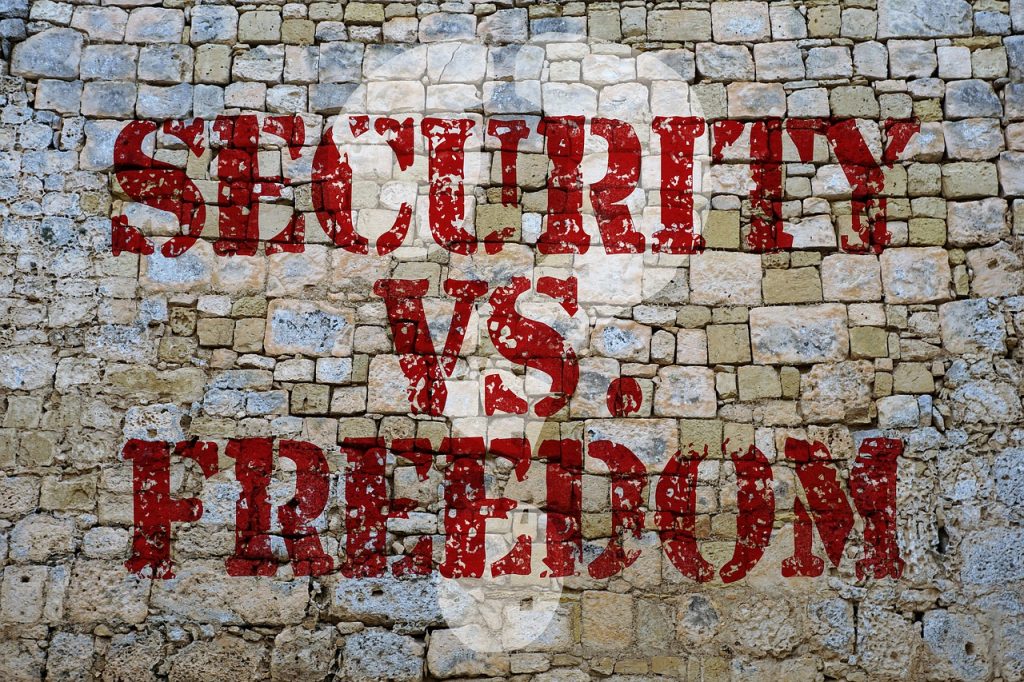The Jefferson-Madison Debates: To Pay, or Not to Pay…
June 12th, 2018 // 10:12 am @ Oliver DeMille
Tackling a Universal Basic Income
(Book Reviews: Annie Lowrey, 2018, Give People Money;
Richard Weaver, 1948, Ideas Have Consequences [2013 reprint])
“Neither parents nor children have any other prospects than what are founded upon industry, economy, and virtue…. Hence arises a spirit of universal activity, and enterprise in business…. No difficulty or hardship seems to discourage them.”
—Samuel Williams, History of Vermont, 1794
“Buy that latte and a child dies.”
—Esquire, The Money Issue, April 2016
Up or Down
I recently saw a cartoon that made me smile. If I remember correctly, it portrayed a Raptor on the left, an ostrich-like creature in the middle, and a chicken [Editor: Kiwi, actually?] on the right. The caption read:
EVOLUTION
MISTAKES WERE MADE
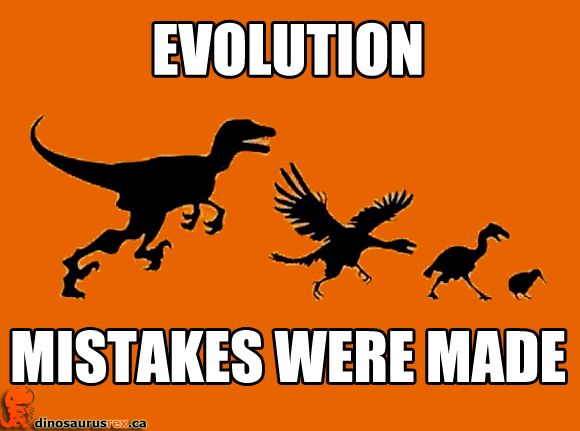 I laughed pretty hard. If evolution really did go from raptors to chickens, Darwin’s survival of the fittest and natural selection leave a lot of questions. Funny.
I laughed pretty hard. If evolution really did go from raptors to chickens, Darwin’s survival of the fittest and natural selection leave a lot of questions. Funny.
A similar energy frequently invades modern public policy. Far too many government programs seem to accept that if we have the right goals in mind, if our heart is in the right place and we’re really trying to fix things, it doesn’t matter much if we legislate in a way that will actually solve the problems. Just trying is, apparently, enough.
For example, we want better education for our youth, but if throwing more money at public schools would really fix the problem, we’d be ahead of Japan, the United Kingdom and Switzerland in language, math, and science. In fact, the U.S. ranks 17th overall among industrialized nations (Source: Ranking America), and while we rank first in expenditures per student (over $12,000 per year for each high school student), American 15-year-olds score 31st in math literacy and 23rd in science (Source: CBSnews.com). Clearly something more than additional funding is needed—like a re-emphasis on real teaching, which means mentored personalization for each student. Instead, government programs keep throwing more money at schools in ways that don’t help, as if trying harder is somehow good policy.
Likewise, if passing tougher gun laws would seriously solve or even significantly reduce violent crime, they might make sense. But since the statistics clearly show that such laws don’t fix the problem (criminals don’t really follow them, after all), why are we still even debating the topic? Why is it a good idea to have the law-abiding citizens unarmed and the criminals armed to the teeth—as a direct result of government policy—is pretty much mindboggling. But at least somebody is trying, right?
Better than Bad
 One more example: if we really could significantly reduce the cost of health care for everyone, and at the same time insure everyone, keep the same doctor, and keep the same healthcare provider, who wouldn’t want that? But Obamacare was promoted and passed even though many of the experts warned of exactly what happened—premiums skyrocketed, many people had to change their healthcare providers, a lot of companies and states pulled out, and a lot of people couldn’t keep their doctor. “We had to try, though, didn’t we?” Some Americans apparently still think this is a sound basis for government policy. We subscribe to the kindergarten mentality of “‘A’ for effort,” or “‘A’ for intention” –regardless of principles or outcomes.
One more example: if we really could significantly reduce the cost of health care for everyone, and at the same time insure everyone, keep the same doctor, and keep the same healthcare provider, who wouldn’t want that? But Obamacare was promoted and passed even though many of the experts warned of exactly what happened—premiums skyrocketed, many people had to change their healthcare providers, a lot of companies and states pulled out, and a lot of people couldn’t keep their doctor. “We had to try, though, didn’t we?” Some Americans apparently still think this is a sound basis for government policy. We subscribe to the kindergarten mentality of “‘A’ for effort,” or “‘A’ for intention” –regardless of principles or outcomes.
In short, when we don’t understand human nature, we make mistakes. Numerous governmental attempts to solve our problems could be labeled:
GOVERNMENT PROGRAM
MISTAKES WERE MADE
This time nobody’s laughing though, maybe because we realize that we are the chickens in the cartoon. And if you’ll forgive a mixed metaphor, now: Not a lot of people like being guinea pigs. We need a better standard for government policy than “But we have to try! It’s such a big problem, so even bad policy is better than no policy.”
And yet: Not so. Government policies sometimes make things worse, not better.
Part II
“Do you see the necessity of accepting duties
before you begin to talk of freedoms?
These things will be very hard,
they will call for deep reformation.”
—Richard Weaver, Ideas Have Consequences, 1948
“You need $1,000 today. How to get it.”
—Headline in Esquire, The Money Issue, April 2016
Open Account, Open Mind
 Which brings us to a very important topic: A Universal Basic Income (UBI). The UBI has been recommended in one form or another by Mark Zuckerberg, Richard Branson, Ray Kurzweil, Bernie Sanders and others, and now Annie Lowrey’s new book Give People Money makes an energetic case for it. Lowrey’s subtitle outlines the major perceived benefits of the program: “How a Universal Basic Income Would End Poverty, Revolutionize Work, and Remake the World”.
Which brings us to a very important topic: A Universal Basic Income (UBI). The UBI has been recommended in one form or another by Mark Zuckerberg, Richard Branson, Ray Kurzweil, Bernie Sanders and others, and now Annie Lowrey’s new book Give People Money makes an energetic case for it. Lowrey’s subtitle outlines the major perceived benefits of the program: “How a Universal Basic Income Would End Poverty, Revolutionize Work, and Remake the World”.
“Imagine if every month the government deposited $1,000 into your checking account,” suggests the ad copy for Give People Money, “with nothing expected in return.” Interesting. Nothing expected in return? What about the taxes needed to fund the $1K per person across the nation, or the globe? That’s actually quite a significant expectation.
But I digress. Let’s keep an open mind and listen to Lowrey’s proposal. After all, even arch-conservative/libertarian thinkers Milton Friedman and Friedrich Hayek made a case for a Universal Basic Income, or something like it.
Hayek said:
“The assurance of a certain minimum income for everyone, or a sort of floor below which nobody need fall even when he is unable to provide for himself, appears not only to be a wholly legitimate protection against a risk common to all, but a necessary part of the great society in which the individual no longer has specific claims on the members of the particular small group into which he was born.”
Friedman suggested that in times of economic stagnancy, when consumers aren’t spending and producers aren’t creating, it might be prudent to jumpstart the economy by “helicoptering.” This consists of dumping large amounts of cash from helicopters, allowing people to pick up the money and spend it—thus rebooting business. Of course, the actual idea behind “helicoptering” was to deposit a predetermined amount of money into the bank accounts of large numbers of people, those making less than a certain amount of money, not actually throwing cash from helicopters. While this plan focused on a one-time event, not a monthly deposit like most Universal Basic Income proposals, the principles are reminiscent.
Ends and Beginnings
 To many conservatives, it makes sense that liberals, progressives, and socialists would endorse the idea of a Universal Income. But the same basic support from both Hayek and Milton Friedman is a head-scratcher.
To many conservatives, it makes sense that liberals, progressives, and socialists would endorse the idea of a Universal Income. But the same basic support from both Hayek and Milton Friedman is a head-scratcher.
In context, Hayek seems to have made this proposal as an alternative to entrenched socialism: a system where most or all of the jobs are controlled and distributed by government. In such an environment, a Universal Income would actually provide the opportunity for a budding free market, a chance for entrepreneurship, or “to relocate” to another nation with more freedom. (See Matt Zwolinski, “Why Did Hayek Support a Basic Income?” Libertariansim.org).
Lowrey’s proposal, in contrast to Hayek, is set in our current world. Or, more precisely, in a better world built on this one. The benefits of the program would be, mainly:
*End systemic poverty. By “hacking poverty”, we could eliminate much of the suffering and dead-end misery in the world (or nation). (Give People Money) Those who want more than the $1,000 per month, or whatever the UBI is, could work more or build a business, etc.—just like many people do now. But those who choose otherwise would at least have a basic living.
*Emphasize individual purpose. People could focus on doing work they love, rather than being tossed about by the cold demands of market forces. Individuals could emphasize their life purpose, and spend their days doing things they really care about. No more “crummy jobs.” (Ibid.) This might even help create a “groovy, Trekkie post-capitalist world without work”. (Ibid.)
*Improve social justice. It might even help nudge the world towards truly solving the problems of social injustice. “A UBI” Lowrey says, “would undercut the basis of such judgments [including racial, class, and gender discriminations] and be a powerful force for human dignity.” (Ibid.) It would also acknowledge “that our market economy leaves people out and behind, creating poverty and punishing individuals who cannot or are not working for an employer…. It would acknowledge our interdependence as well as our independence.” (Ibid.)
*Increase and spread freedom. Lowrey: “A universal, unrestricted cash benefit—just giving people money—would promote the ‘true individual freedom’ that comes from ‘economic security and independence’ as Roosevelt argued seventy years ago.” (Ibid.)
Into Reality
 Most people—whatever their political leanings—can agree with the goals of ending poverty, emphasizing individual purpose in life, improving social justice for everyone, and increasing/spreading freedom. Personally, I don’t know anyone who is against these 4 things. The devil, the cliché promises, is in the details. The disagreement turns on how to accomplish such ideals. Conservatives, libertarians, liberals and progressives, not to mention socialists, anarchists, communists, mercantilists, humanists, distributists, originalists and Keynesians have long pointed out the flaws in each others’ proposals. How indeed can such goals be realized? Or, as Nietszche often quipped: “How now?”
Most people—whatever their political leanings—can agree with the goals of ending poverty, emphasizing individual purpose in life, improving social justice for everyone, and increasing/spreading freedom. Personally, I don’t know anyone who is against these 4 things. The devil, the cliché promises, is in the details. The disagreement turns on how to accomplish such ideals. Conservatives, libertarians, liberals and progressives, not to mention socialists, anarchists, communists, mercantilists, humanists, distributists, originalists and Keynesians have long pointed out the flaws in each others’ proposals. How indeed can such goals be realized? Or, as Nietszche often quipped: “How now?”
It’s one thing to have a dream; quite another to implement it effectively—in a way that both works and lasts. Lowrey, fortunately, gives us specifics: She wrote: “Providing a $1,000-a-month UBI to every American citizen would mean spending something like an additional $3.9 trillion a year. This is equivalent to a fifth of the American economy—and equal to every penny the federal government currently spends, on everything from building bridges to fighting wars to caring for the elderly to prosecuting crimes to protecting wetlands.” (Ibid.)
The obvious first question is: Who’s going to pay for this? Lowry: “The top 1 percent of earners pay about 40 percent of all income taxes, which comes to about $600 billion a year. You could tax away every penny they earned, and it would still not come close to paying for a full-fat UBI in other words.” (Ibid.)
Not a good start. But, Lowrey points out: “Eliminating or trimming back other programs would help defray the expense. Right now, the government spends roughly $2.7 trillion on its social-insurance programs…. Still, a $1,000-a-month benefit, or a smaller one, would require new spending and likely new sources of revenue, regardless of how deep other budgets were cut…. Giving the same thing to everyone means spreading the butter a lot thinner, meaning that we need more butter.” (Ibid.)
She identifies some of the major criticisms of a UBI, but suggests that “the knee-jerk opposition to some form of a UBI—crying that it is too expensive or unrealistic—feels over-wrought. Raising enough revenue for a $1,000-a-month UBI is more a matter of will than of mathematics, and would bring the United States’ tax burden in line with that of the European social democracies…. Creating a top tax bracket at 55 percent, instituting a modest wealth tax, ending the mortgage interest deduction, implementing a value-added tax—proposals like those would get us there.” (Ibid.) She further argues that since the U.S. government prints its own money, “dollars are not something the United States government can run out of.” (Ibid.) [Editor coughs and sputters…]
Lowrey is quick to add that the government shouldn’t print so much money as to cause rampant inflation, but still, she maintains, government debts, deficits, and a bit of inflation aren’t the worst things in the world. A UBI is worth it, she seems to suggest. But her easy approach to the math is…well…you decide: “A financial transactions tax would raise an estimated $100 billion to $400 billion a year. A value-added tax could easily raise a trillion dollars. A well-designed carbon tax would raise about $100 billion a year. Moreover, a wealth tax, such as a hefty levy on estates over $3 million, could raise hundreds of billions.” (Ibid.) Taxes on robots are also a possibility, Lowrey suggests, as are Negative Income Taxes where the IRS sends monthly checks to everyone below the poverty level. (Ibid.)
Where? How?
 On a personal level, I was very excited to read the section on “how” to fund a UBI. After reading over three-fourths of the book and its very interesting examples and ideas about UBI economics, I was thrilled to finally get to the nitty-gritty of the plan. The finances. But…it never came. The paragraph above was as close as it got. Granted, these are interesting ideas about funding a UBI, but there is no actual detailed proposal in this book. Disappointing, to say the least.
On a personal level, I was very excited to read the section on “how” to fund a UBI. After reading over three-fourths of the book and its very interesting examples and ideas about UBI economics, I was thrilled to finally get to the nitty-gritty of the plan. The finances. But…it never came. The paragraph above was as close as it got. Granted, these are interesting ideas about funding a UBI, but there is no actual detailed proposal in this book. Disappointing, to say the least.
In fairness, perhaps a specific plan for a UBI wasn’t Lowrey’s point—such a plan might detract from her real goal, which was to promote the idea of implementing a UBI. The plan can come later. Or, possibly, she has such a plan but felt that this book should emphasize the benefits of the idea, not get people caught up in the details of just one way to do this. Wise choice, perhaps.
Still, without a specific plan, without real numbers, how can we assess the efficacy of pursuing a UBI? “We have to try” simply isn’t good enough. Especially when the numbers are so fuzzy. For example, a carbon tax might “raise about a $100 billion a year”, but how would the same tax reduce revenues from other segments of the economy—with profits impacted by energy prices? Increased fuel prices caused by such a tax would impact almost every sector of the economy. And, yes, a “value-added tax” might “easily raise a trillion dollars”, but this is a gross total, not net. The impact would be huge, and not all for good.
Likewise, even if everything Lowrey says about increased taxes is true, what is the net impact of “[c]reating a top tax bracket at 55 percent, instituting a modest wealth tax, ending the mortgage interest deduction,” etc.? What, precisely, is a “modest wealth tax”? Modest by what standard? And how does such a tax impact charities, philanthropies, and those who receive inheritances? True, Lowrey’s point is that there are ways to increase taxes—and thereby pay for a UBI—but she says little about how such increases will redirect and redistribute money. Or even if any (or all) of these increases will boost or weaken the overall economy. If GDP actually declines, the source of UBI funding will dry up, or at least diminish—while the amount required to send out $1,000-per-month naturally goes up with population.
For the Future
 I actually really like Give People Money—it is well-written, enjoyable to read, full of interesting stories – sometimes fascinating, always thought-provoking. The research and quotes are excellent. Any book that features George Jetson in the same sentence as Marie Curie has my attention. By the way, I spent three very enjoyable hours just reading the endnotes and looking up articles and sources that sparked my interest. Fascinating! I’m a Lowrey fan.
I actually really like Give People Money—it is well-written, enjoyable to read, full of interesting stories – sometimes fascinating, always thought-provoking. The research and quotes are excellent. Any book that features George Jetson in the same sentence as Marie Curie has my attention. By the way, I spent three very enjoyable hours just reading the endnotes and looking up articles and sources that sparked my interest. Fascinating! I’m a Lowrey fan.
In short, I recommend the book. It’s a great read, a fun trip into economic comparisons—from Keynes to Hunger Games to Maslow’s hierarchy to Ford trucks, AI and Silicon Valley. But I didn’t come away from it with any sense that a UBI is realistic. Intriguing, yes. Thought-provoking, yes. Realistic, no. Fundable, possibly—in the short term; but what about the lasting impact?
There is another proposal of this type that is worth considering. Charles Murray has suggested that every adult receive $10,000 per year and that all other welfare-state programs be discontinued. (See In Our Hands; see also “A Guaranteed Income for Every American,” Wall Street Journal) This would cost taxpayers less than the current safety net, some argue, and it would put decisions in the hands of the actual people. Clearly a lot of government waste and misuse of funds would also be eliminated.
The key to this proposal is that it would end all other government social-insurance programs, departments, polices and expenses. Interestingly, most of the criticism against Murray’s plan, nearly all from liberals and the Left, emphasizes that it is financially infeasible. According to Murray’s own numbers, there is a $355 billion shortfall the first year. (Ibid.)
Murray suggests that the gap would be closed, eventually, as the population rises with upcoming generations. Still, the transition costs of, at least for a time, funding both the Social Security/Medicare/Medicaid model and also $10K a year to adults make the program unrealistic—as Murray himself says. But if we continue with our current system, he argues, it’s going to financially collapse anyway—better to get the ball rolling on a system that eventually will work.
Part III
“Arrival of the Fittest”
—Chevrolet/Corvette ad
“How to lead experiments that actually work”.
—Harvard Business Review
From the Starting Point
 But here’s the real challenge—for all UBI-style proposals, from Lowrey to Hayek to Murray. Would a Universal Basic Income even be good for people? Is it compatible with human society and culture, human needs, human potential?
But here’s the real challenge—for all UBI-style proposals, from Lowrey to Hayek to Murray. Would a Universal Basic Income even be good for people? Is it compatible with human society and culture, human needs, human potential?
This is a big question. The most important question. At first blush, most people would like a check for $1,000 a month. Why not? A number of people could desperately use it. But what is not seen in this arrangement? Such a challenging question demands that we address what Aristotle called first things, or primary goods. First principles. The most basic foundations of human understanding are indeed vitally important, and take us back to the poignant question asked by philosophers, prophets, economists and political sages:
To be human is to ______________. ???
The word we use to fill in the blank tells us a great deal about how we view the world. The original liberal answer, articulated most clearly by thinkers like Hobbes and Rousseau, was: To be human is to suffer. In contrast, the conservative answer, from Aristotle to Adam Smith, was: To be human is to struggle.
There are, of course, other views. Shakespeare suggested that To be human is to err, The Romantics answered that To be human is to love, and the German Trifecta of Hegel, Marx and Nietszche argued that To be human is to fight and win—emphasis on win. But the initial debate between suffer and struggle remains at the center of today’s great conversation.
See Both Sides
The first approach makes the following case:
- human life is suffering
- it is up to all of us to lessen suffering as much as possible
- to do this, we need a great deal of power
- government is the entity most likely to obtain and use power in a way that greatly lessens human suffering in the world
- we should actively help grow the power and reach of government everywhere
In short: Liberalism.
The second view takes a different tack:
- the purpose of life is to struggle against all odds for goodness, righteousness, and progress
- this is best done by individuals alone and individuals voluntarily working in groups
- institutions that help individuals in this process are useful, but institutions must be carefully watched and limited because they frequently become distractions or even roadblocks to real progress
- ultimately the great, noble struggle of humans on this earth is threefold—to serve and help others in this life, to improve oneself in ways that make the world better, and in doing these first two things to prepare for better things in the life to come
To wit: Conservatism.
Richard Weaver argued that while the Progressive path tries to make life easier for everyone and institutionalize it for all, Conservatism programs attempts to help everyone more bravely and effectively embrace the path of hard things. (See Ideas Have Consequences). He taught that programs designed mainly to spread ease, especially forced attempts by government, were beneath the dignity and potential of mankind.
Today’s Goal
 Weaver wrote of modern efforts to make everything easier for everyone, calling out people for promoting a life based on “Loving comfort, risking little, terrified by the thought of change…” He called this the “spoiled child psychology”, exhibited by too many adults in the modern world. The best, and worst, example of this, he said, is the widespread sense of entitlement among so many modern citizens.
Weaver wrote of modern efforts to make everything easier for everyone, calling out people for promoting a life based on “Loving comfort, risking little, terrified by the thought of change…” He called this the “spoiled child psychology”, exhibited by too many adults in the modern world. The best, and worst, example of this, he said, is the widespread sense of entitlement among so many modern citizens.
He spoke most forcefully against those who discourage lives of strenuous work, facing and overcoming challenges, struggling-failing-and-continuing-to-struggle. Such work, hard and continuous, is what life is about, Weaver taught. It is why we were born. To do things. Hard things. Alone. Together. Because work matters. And because lives of work and struggle are dignified, meaningful, and very often happy lives. We were not, he assures us, born to bask in lives of ease provided by bureaucrats or aristocrats or anyone else. Such a path he considered worthless.
These are, ironically, hard words—especially to modern ears. “Like Macbeth,” Weaver wrote, “Western man made an evil decision, which has become the efficient and final cause of other evil decisions. Have we forgotten our encounter with the witches on the heath? It occurred in the late fourteenth century, and what the witches said…was that man could realize himself more fully if he would abandon his belief in the existence of transcendentals.” (Ibid.) The witches’ solution: Stop seeing life as the battle to seek heaven, and start fixing this earth, through manmade institutions and government power. (Ibid.)
The result of this shift, from “embracing a life of struggle” to “a life of suffering and trying to institutionally force the end of suffering”, began our journey to what Weaver terms “modern decadence”. (Ibid.) In the drive to avoid and forcefully eliminate all suffering, to find the easy way and help our children seek even easier ways, most people turned to materialism. Away from service, and more to amassing money and things—as hedges against potential suffering. As Weaver put it: “Man created in the divine image, the protagonist of a great drama in which his soul was at stake, was replaced by man the wealth-seeking and-consuming animal.” (Ibid.)
It turns out that while a belief in struggle led many people to work and serve humanity, a greater faith in suffering drives most toward materialism. Ironic. An even deeper irony followed: the philosophy of suffering as the great evil spawned a culture of seeking ease through material success, and this in turn created a focus on ease itself. The work motivated by materialism gave way to the work of finding ways to avoid work. Profound. In Weaver’s words: “a carnival of specialism, professionalism, and vocationalism…fostered and protected…strange bureaucratic devices.” (Ibid.) The new mantra: government must make things easier for everyone.
Shifting
 Is it any surprise that today’s generation of youth—considered by many an embodiment of a sixth human sense of entitlement—are often referred to as Snowflakes? “We should be taken care of by the government” is a popular view. “Or if not by government, then by somebody. Anybody…”
Is it any surprise that today’s generation of youth—considered by many an embodiment of a sixth human sense of entitlement—are often referred to as Snowflakes? “We should be taken care of by the government” is a popular view. “Or if not by government, then by somebody. Anybody…”
“Otherwise, how will our lives be easy?”
In reality, this view extends far beyond any one generation. Weaver said modern society is replacing homo sapiens with homo faber—meaning from “wise humans” to “humans engineered by architects, by experts”. (Ibid.) From freemen to slaves. Weaver’s connection of “the easy life” to “slavery” is interesting. Certainly a life in slavery is not easy, but only those who engage the true struggle of life can remain truly free. And the struggle is hard, not easy. Period. Those who seek lives of ease unwittingly take the path toward slavery.
As conservatives know: “If it is easy, beware…” In most cases, Easy Education, Easy Citizenship, Easy Career = Mediocre Education, Government by Elites, Middling Income. What, then, would Weaver say of a Universal Basic Income?
He wrote:
“The egotism of work increasingly poses the problem of what source will procure sufficient discipline to hold men to production. When each becomes his own taskmaster and regards work as a curse which he endures only to gain means of subsistence, will he not constantly seek to avoid it?” (Ibid.)
And what will such a man or woman do when money arrives each month and no work is required?
A few people, when work is no longer asked of them, will turn their efforts to service, art, or other areas of interest. Some will follow a great passion or goal they’ve long wanted to pursue. But what actually happens is well documented. The majority of people, when suddenly retired, laid off, recipients of the lottery, or otherwise released from daily work, struggle to fill their time with things that bring happiness. Note that this is the wrong kind of struggle.
Many such people soon find their newfound free time “accompanied by intensive explorations of the individual consciousness, with self-laceration and self-pity.” (Ibid.) They frequently turn “inward and there discover…an appalling well of melancholy and unhappiness…” (Ibid.) Weaver used these words to describe certain writers who embodied this view; but if Weaver’s words are a bit too flowery, they aren’t inaccurate. Many people find retirement, unemployment, or just lots of free time unsatisfactory and frustrating.
Reaching for Greatness
 A 2015 report in The Atlantic noted: “The jobless don’t spend their time socializing or taking up new hobbies. Instead, they watch TV or sleep…. Two of the most common side effects of unemployment are loneliness, on the individual level, and the hollowing-out of community pride.” (Derek Thompson, “A World Without Work”)
A 2015 report in The Atlantic noted: “The jobless don’t spend their time socializing or taking up new hobbies. Instead, they watch TV or sleep…. Two of the most common side effects of unemployment are loneliness, on the individual level, and the hollowing-out of community pride.” (Derek Thompson, “A World Without Work”)
For many people, it turns out that “easy” is unfulfilling, in the same way that achieving something hard is one of the most rewarding things human beings ever experience. Words such as victory, accomplishment, triumph, success, progress, improvement, and even happiness, defy definition and mean very little unless they are preceded by difficulty and hard work. The greater the struggle, in fact, the greater the victory. Thomas Paine made this a central theme in his writings.
The truth is that the reality flies in the face of modern thinking. Specifically, most people want hard, even if they don’t realize it. Without hard, most people simply aren’t happy. It turns out that hard isn’t always equal to suffering, but it is in fact a vital component of happy. “Easy” is nice as a vacation, but it isn’t the basis of a good life. “Hard” can be such a basis, as long as it is accompanied by freedom—or at least the opportunity to gain freedom.
As for a Universal Basic Income, the jury is still out. If people don’t have to work for their basic living, some will argue, they’ll work for other things—better things. This is certainly true of some people, and it may be true for many more. That said: It is definitely not true of everyone. Whether it is true for enough people to make it worth adopting as public policy will likely be debated for many years to come. But the promise of a UBI, that it will significantly reduce human suffering, naturally sounds good to many moderns but sparks immediate skepticism in those who embrace the historical reality of human nature. Humanity has proven, many times, that hard challenges, within reason, are nearly always better for people than lasting times of ease.
I have my doubts that a UBI will do much to fix the actual problem. It could easily do the opposite: when a lot more people aren’t working, some of them might use their time in ways that hurt others and increase suffering. This is certainly a possibility.
Pushing Riding Forward
 Modern man, Weaver pointed out, has: “been given the notion that progress is automatic” that he/she has not just a right to pursue happiness but “a right to have happiness”, regardless of what he does, or doesn’t do. (Ideas Have Consequences) He has been told that someone else is responsible for his happiness, and that if he is sad, or unfulfilled, someone else is to blame. (Ibid.) He has been informed that if he feels frustration, some superior “in the hierarchy” has “practiced an imposition upon him”. (Ibid.)
Modern man, Weaver pointed out, has: “been given the notion that progress is automatic” that he/she has not just a right to pursue happiness but “a right to have happiness”, regardless of what he does, or doesn’t do. (Ideas Have Consequences) He has been told that someone else is responsible for his happiness, and that if he is sad, or unfulfilled, someone else is to blame. (Ibid.) He has been informed that if he feels frustration, some superior “in the hierarchy” has “practiced an imposition upon him”. (Ibid.)
“The truth is,” Weaver said, “that he has never been brought to see what it is to be a man…. [T]hat he really owes thanks for the pulling and tugging that allow him to grow…. This citizen is now the child of indulgent parents who pamper his appetites and inflate his egotism until he is unfitted for struggle of any kind.” (Ibid.) And the following zinger:
“The spoiling of man seems always to begin when urban living predominates over rural.” (Ibid.)
Is it lost on anyone that this is directly related to Blue State/Red State culture?
“In effect,” Weaver continues, “what modern man is being told is that the world owes him a living. He assents the more readily for being told in a roundabout way, which is that science owes him a living.” (Ibid.) “An artificial environment causes him to lose sight of the great system not subject to man’s control.” (Ibid.) Indeed, his moral and ethical senses are shaped by newspapers more than prayers, to paraphrase Nietszche.
What does that “great system” say about work? Easy versus hard? Individual responsibility versus institutions? If we push aside the culture of newspapers and instant mobile news updates for a moment, and instead ask the kind of questions obvious in a culture based on the idea that “humans thrive in the hard struggle,” we find ourselves dealing with bigger issues:
- Is pay without work good for the soul?
- Is it good for family life, or is it more likely to hurt families?
- Will it naturally render adults more child-like, dependent?
- And, since the pay actually comes from the work of someone else, are we simply taking from their work and accepting it without recompense?
- What does the fact that they are forced to pay this money say about those who accept it?
- Can a people remain free under such an arrangement?
Building or Breaking
 These are big questions. Unlike most modern policy debates, these big questions ignore the small talk and get to the real point. For some, this is distracting. “That’s not how it’s done,” scolds many a modern expert. But the truth is still relevant, right? Big realities do matter.
These are big questions. Unlike most modern policy debates, these big questions ignore the small talk and get to the real point. For some, this is distracting. “That’s not how it’s done,” scolds many a modern expert. But the truth is still relevant, right? Big realities do matter.
The view of human life as a great struggle for goodness puts each citizen forward as a potential hero. But the hero’s currency, Weaver notes, is “exertion, self-denial, endurance”, while “the spoiled child” wants everyone to be protected from hard things—especially making a living. (Ibid.) Preferably, in this latter view, such protection will come from government—the regime as supreme being, the end-all of suffering, the all-powerful state.
To be clear, a society of people who seek $1,000 (or other) payments from the government, not for work but just because they need or want it, is not on a path to freedom—or even to maintaining the freedoms they already enjoy. Speaking of payments from the government, the following story is related by Weaver in Ideas Have Consequences:
“During the early part of the second World War there came to light the story of a farmer from the back country of Oklahoma—one of the yet unspoiled—who, upon hearing of the attack on Pearl Harbor, departed with his wife to the West Coast to work in the shipyards…. [T]he new worker did not understand the meaning of the little slip of paper handed him once a week. It was not until he had accumulated over a thousand dollars in checks that he found out that he was being paid to save his country. He had assumed that when the country is in danger, everyone helps out, and helping out means giving.”
The Spiral
Also from Weaver:
“The past shows unvaryingly that when a people’s freedom disappears, it goes not with a bang, but in silence amid the comfort of being cared for…. If freedom is not found accompanied by a willingness to resist, and to reject favors [from the government], it will not long be found at all.”
Easy kills.
Hard is the future.
But those on the side of freedom embrace the struggle.
This is hard doctrine, no doubt. But it is the doctrine of a free people, and those who would remain free. Those seeking the way of ease will not, by definition, choose freedom—or fight for it when needed. Freedom is hard. Those searching for ever-easier paths will vote for more government, and when unearned $1,000 checks arrive each month to reward their search, a majority will do what makes the most sense in such a situation: vote for candidates who promise to increase the checks to $1,200 then $1,500 then $2,100…and more. Government will increasingly apply more force to the productive individuals and organizations in society, and everyone else as well.
No free society can weather—financially, politically, or morally—such an electorate.
Ever.
“Freedom is a fragile thing and is never more than one generation away from extinction. It is not ours by inheritance; it must be fought for and defended constantly by each generation, for it comes only once to a people. Those who have known freedom and then lost it have never known it again.”
—Ronald Reagan
Suggested Readings
- An important article that addresses the future of work, a basic universal income, and recent trends in technology and employment—Derek Thompson, “A World Without Work,” The Atlantic, July/August 2015
- Daniel Pink, A Whole New Mind
- Joshua Cooper Ramo, Seventh Sense
- Virgil, Georgics
- Victor Davis Hansen, The Other Greeks
Category : Blog &Book Reviews &Citizenship &Community &Constitution &Culture &Current Events &Economics &Generations &Government &History &Information Age &Leadership &Liberty &Politics &Service &Statesmanship
The Jefferson-Madison Debates: The Next Civil War?
May 13th, 2018 // 4:25 pm @ Oliver DeMille
True or False…or False?
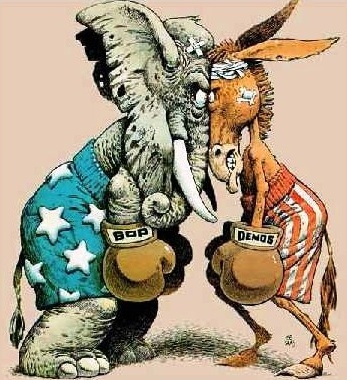 It’s getting worse. Just watch the news. This phrase, the “Next Civil War”, was recently used by economic forecaster Harry Dent to describe the growing divide between Red and Blue state cultures. These two sides now disagree with each other to the point that in many cases people experience real hatred for those on “the other side”.
It’s getting worse. Just watch the news. This phrase, the “Next Civil War”, was recently used by economic forecaster Harry Dent to describe the growing divide between Red and Blue state cultures. These two sides now disagree with each other to the point that in many cases people experience real hatred for those on “the other side”.
Former president Barack Obama noted that people who largely get their news from the mainstream media and those who get their news mostly from Fox are basically living “on different planets.” They not only disagree on principles and solutions, he pointed out, but they fundamentally disagree on “facts”. What the Blue culture sees as incontrovertible truths, the Red culture frequently sees as lies. Fake. False. And the opposite is just as true: what the Red culture sees as fact is often considered false by Blue culture.
No wonder the two sides are so angry at each other. When you disagree on what the facts are, the solutions promoted by the other side frequently appear ludicrous. Even dangerous. Both sides, each rooted in its own understanding of reality, watch the other side say and do things that are clearly and painfully hurtful—according to the set of obvious but differing “facts” they each believe.
Roadblocks
This divide is widening. We’ve reached the point that one of the worst things parents can learn about their child’s “significant other” or new fiancé is that he/she is a Republican, or Democrat—depending on the family. Religion, career, ethnicity, education, financial status, and even a criminal history, are largely negotiable in most modern families. But the other political party? Many parents turn Tevye: “If I try and bend this far, I’ll break.”
Lynn Vavreck wrote in The New York Times (January 31, 2017): “In 1958, 33 percent of Democrats wanted their daughters to marry a Democrat, and 25 percent of Republicans wanted their daughters to marry a Republican. But by 2016, 60 percent of Democrats and 63 percent of Republicans felt that way.” And for many, the feelings run very deep. While in 1994 21 percent of Republicans viewed Democrats in the “Very Unfavorable” category, by 2016 the number was 58 percent. (Pew Research Center) In 1994 17 percent of Democrats saw Republicans as “Very Unfavorable”, but the number in 2016 had skyrocketed to 55 percent. (Ibid.)
Aaron Blake summarized this concern in The Washington Post: “If 58 percent of Republicans hate Democrats and 55 percent of Democrats hate Republicans, that would mean about 35 percent of registered voters hate the opposite political party.” (June 19, 2017) “But that’s not quite hate…. 45% of Republicans see the Democratic Party as a threat to the nation’s well-being…. [and] 41% of Democrats see the Republican Party as a threat to the nation’s well-being”. (Ibid.) When you add independents, the “hate” one of the parties (those who see the other party as a threat to the nation) makes up 39 percent of registered voters or “About 1 in 4” Americans. (Ibid.)
There are a lot of others who see the other side in an unfavorable light, around 33 percent of additional Republicans (for a total of 91% with “unfavorable” or “very unfavorable”) and 30 percent of additional Democrats (86% with “unfavorable” or “very unfavorable” views). (Ibid.) Note that all of this occurred before the Trump presidency. Again, this divide is real, and deep. In the Trump era the intensity has only increased.
But does any of this justify the phrase “Next Civil War”? Not yet. Not unless we’re going to surrender to hyperbole. Yet this conflict is escalating in many sectors—it’s moved beyond the traditional battlegrounds of politics and news media to additional culture and power centers including education, television, movies, entertainment awards shows, daily and nightly talk shows (both radio and television), sports, and multiple venues on social media. Even social media and Internet platforms are getting involved by adjusting algorithms to promote certain political leanings—or dampen the voice of those they dislike—often without informing their customers.
Platforms and Soapboxes
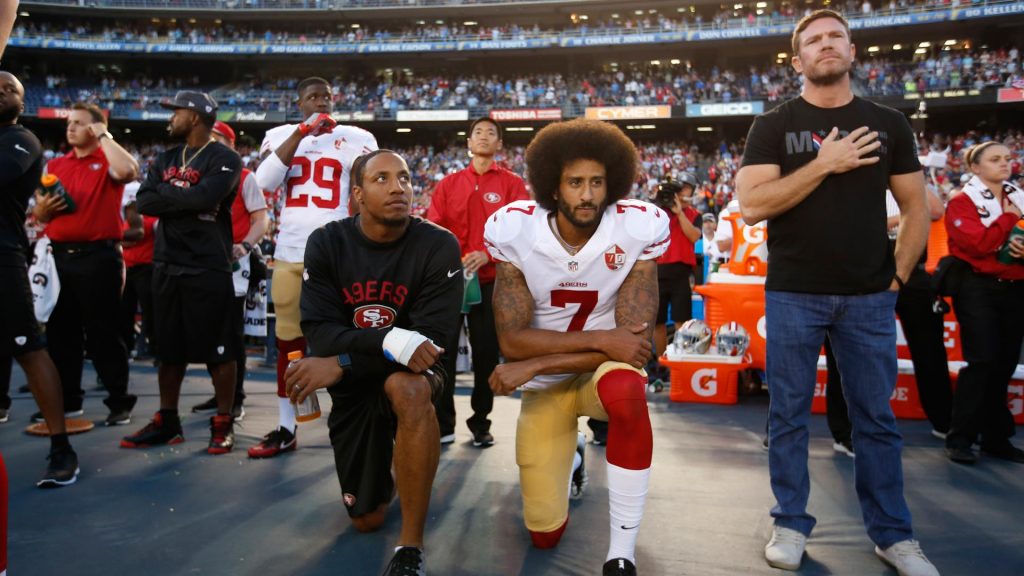 For many Americans, the sight of some NFL players purposely kneeling during the National Anthem is the ultimate symbol of this divide. One side sees young role models and leaders using their public platform to bravely protest government abuse—especially what they consider racially charged police violence. The other side feels hurt and confused by millionaire beneficiaries of the American Dream figuratively spitting on the American Flag and the sacrifice of dead and maimed military heroes.
For many Americans, the sight of some NFL players purposely kneeling during the National Anthem is the ultimate symbol of this divide. One side sees young role models and leaders using their public platform to bravely protest government abuse—especially what they consider racially charged police violence. The other side feels hurt and confused by millionaire beneficiaries of the American Dream figuratively spitting on the American Flag and the sacrifice of dead and maimed military heroes.
It’s difficult to even discuss this situation rationally in many venues due to the raw and heartfelt emotions of people on both sides of the Red-Blue cultural divide.
Sadly, many schools have also become places of great conflict. For example, a national uproar occurred when a middle school teacher assigned her students to write letters to political officials urging them to pass stronger gun control laws. Should teachers tell middle school children what sides to take on political issues? And assign them to engage in activism for one specific side? At what point does teaching become brainwashing? A father of one of the students, a policeman, refused to allow his child to do the assignment. The father deeply disagreed with the politics of the teacher, and many of the other parents disagreed with the politicization of middle school in general. In response to backlash, the teacher allowed students to skip the assignment without penalty, but didn’t suggest writing against stronger gun control if this more accurately aligned with the student’s views. The same week, an elementary student was expelled from school for drawing himself hunting during a “free art” assignment, and a high school teacher was fired for a lengthy history-class soliloquy describing current members of the military as “the lowest of the low” in our society. Red and Blue cultures passionately disagreed on how these events should be handled. Both sides largely see the other’s view as ridiculous and extreme.
Another moment that epitomizes this division occurred on Broadway when the cast of Hamilton stopped the musical midstream to lecture the new Vice President elect, Mike Pence. Hamilton itself is an artistic icon—an American Les Miserables that underscores how the struggles of Washington, Jefferson, Hamilton and their families and peers unleashed freedom in a way that has now spread to people of all backgrounds. The lecture itself was seen by one side as a welcome comeuppance to a dangerous new administration, and by the other as yet another gauche elitist attack against the will of the voters and the American system.
Networks, Numbers, and New Divides
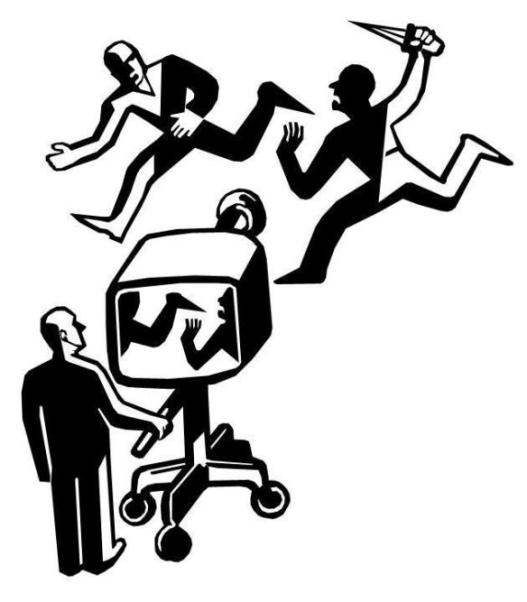 Thankfully this war is largely cultural—it has not devolved into massive physical violence between the two sides of a nation (like the French Revolution, U.S. Civil War, or Russian Revolution, etc.). Hopefully it will always remain peaceful. But in the fight for hearts, there is no doubt that a major civil war for the future of our republic is already under way.
Thankfully this war is largely cultural—it has not devolved into massive physical violence between the two sides of a nation (like the French Revolution, U.S. Civil War, or Russian Revolution, etc.). Hopefully it will always remain peaceful. But in the fight for hearts, there is no doubt that a major civil war for the future of our republic is already under way.
Worse, it is doubtful that any real solution is imminent. When one part of the nation generally believes most of what airs on CNN, ABC, NBC and MSNBC, while another part tends to place more trust in Fox News, Rush Limbaugh, or Trump tweets, the two aren’t going see eye-to-eye on much of anything. And when these two groups are the largest political blocs in our republic, we’re going to have genuine and repeated disagreements.
Perhaps the epicenter of this battle for “the hearts and minds of the people” is found in the media. And this poses a major challenge. Why? Because most of modern media—from both the Left and Right—has three serious problems:
1-It is largely agenda driven (“Forget the facts, full speed ahead!”)
2-It is shallow.
3-It is electronic.
Most people realize the problems with item #1. As a result, they stop listening to media outlets that are clearly against their views—and seem hostile to anyone with a different perspective. This has created another significant problem with modern media:
4-It is isolated. The Right listens to the Right, while the Left listens to the Left. Few listen to both. Few listen to the other side. Over time, media outlets increasingly cater to their narrow audiences, so the extremism increases.
Result: the divisions in our nation are getting wider, deeper, and more susceptible to anger and, too often, extremism and unhealthy thinking and actions.
The Missing Depth
 The 2nd and 3rd problems listed just above are equally dangerous. Many people are very busy—work, family, more work, community, more family. Little time is left over for meaningful civic involvement, much less for taking the time to really dig into each day’s news, truly understand what is happening, and go way beyond the 30 second sound bites or even 3 minute segments on any given story. An hour of the news is more than most can spare—and most hour newscasts only provide a very shallow overview of a few of the day’s news topics. In short, shallow. No time for depth.
The 2nd and 3rd problems listed just above are equally dangerous. Many people are very busy—work, family, more work, community, more family. Little time is left over for meaningful civic involvement, much less for taking the time to really dig into each day’s news, truly understand what is happening, and go way beyond the 30 second sound bites or even 3 minute segments on any given story. An hour of the news is more than most can spare—and most hour newscasts only provide a very shallow overview of a few of the day’s news topics. In short, shallow. No time for depth.
The result is that nearly all shows repeat a few top stories, with only a bit of detail. Even if a person watched television all day, he or she would usually only hear about the same top stories, addressed shallowly over and over—with different opinions but nothing really weighty or reflective. Depth is almost unheard of in most of today’s media.
This is especially true of the electronic media. Besides, television, radio, and online media typically interact with human brains more like entertainment than like something really, truly important. When we watch or listen or surf our news, in most cases, we are in the mode of moving quickly from one thought to the next. Even if we try to focus, ads, pop-ups and crawlers invade our screen with multiple headlines and distractions all at once. Our devices were purposely designed this way, in fact.
Reading the news, in contrast, naturally moves the focus into our intellect. A good start. “But nobody wants to read anything longer than a page…” today’s editors assure everyone. Many editors put the limit at “two paragraphs.” If we don’t read more deeply, we’ll truly and literally become a nation of sheep. Deep thinking is needed to deal with the reality of today’s complex and globally-interconnected world—for any citizen. And deep thinking about the news is basically impossible unless we’re reading (or listening/watching to a source that takes) much more than 5 minutes to really address an issue in some depth.
The Jefferson-Madison Debates
The term “fake news” means the following to most people: news that pushes a false agenda, distracts from truth, lies. But “shallow news” is just as bad for the nation. Even “accurate news” that is shallow is a major blow to our society. And this accounts for most of what media consumers experience. When it is both fake and shallow, we’re in real trouble.
The Left and Right argue about which news reports are “fake,” but few even claim to offer real depth in their news. And even fewer consumers seem to be actively searching for and embracing deeper news.
To reiterate: the Red-Blue divisions are growing, and intensifying, and this means that major problems are ahead unless we do something about it. My plan is to write a weekly (or, sometimes, every two week) article that treats real topics in enough depth to help readers take a step back from the constant screaming of electronic news, and really understand a topic (one at a time) enough to see behind the scenes of modern media spin and fake/shallow posturing.
 More will, of course, be needed to stop our seeming national sprint toward more civil conflict. But I know this weekly column will make a difference—for those who read it.
More will, of course, be needed to stop our seeming national sprint toward more civil conflict. But I know this weekly column will make a difference—for those who read it.
It was the reading and thinking about articles and pamphlets during the American Founding generation that helped America gain freedom, and deep thinking is vitally needed today. I’m calling this new series of weekly articles The Jefferson-Madison Debates, and I hope you’ll join us.
It’s going to be fun.
— Oliver DeMille
(RSS Feed sign up here ***)
Category : Aristocracy &Arts &Blog &Business &Citizenship &Community &Constitution &Culture &Current Events &Economics &Education &Entrepreneurship &Generations &Government &History &Independents &Information Age &Leadership &Liberty &Mission &Politics &Producers &Prosperity &Statesmanship &Technology
The Jefferson-Madison Debates: Are Today’s Education and Politics Entering the Age of Star Trek?
May 12th, 2018 // 9:02 am @ Oliver DeMille
“A shoe, too, is no longer a finished product, but an endless process of reimagining our extended feet, perhaps with disposable covers, sandals that morph as you walk, treads that shift, or floors that act as shoes.” —Kevin Kelly
“We have long argued that as the Web extends in usage…increased access to factual information would improve the quality of public discourse. However, the opposite seems to be occurring.” —Don and Alex Tapscott
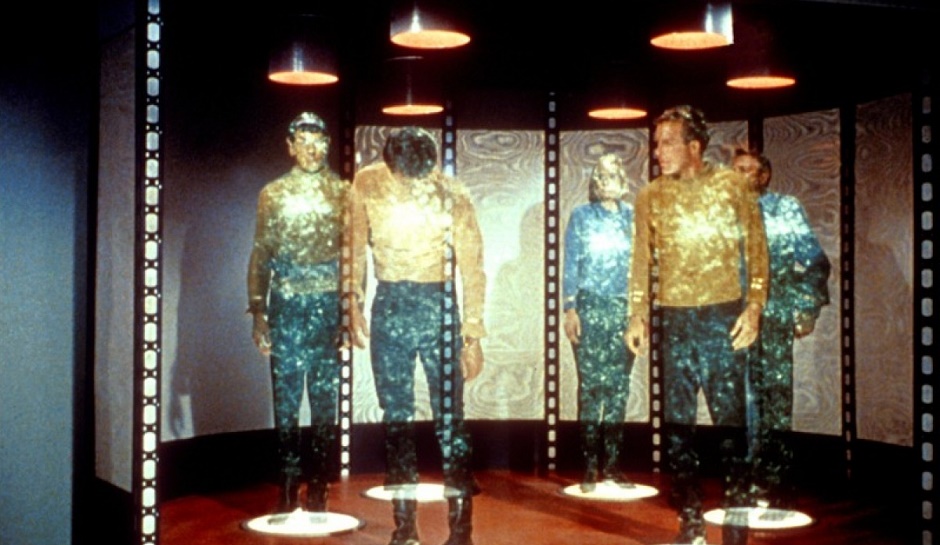 Given how much technology has changed the world in the past twenty years, and how differently we now live, it’s easy to assume that the Internet Revolution has brought the big change—and this era of massive shifts will slowly relax back into some kind of normality. But the truth is that we are just at the very beginning stages of the Information Age. The changes have just begun.
Given how much technology has changed the world in the past twenty years, and how differently we now live, it’s easy to assume that the Internet Revolution has brought the big change—and this era of massive shifts will slowly relax back into some kind of normality. But the truth is that we are just at the very beginning stages of the Information Age. The changes have just begun.
Following are a few of the major developments still ahead, as described by the experts on current technologies. As you think about each of these, consider the ramifications of these trends as they relate to the future of education, career, the economy, and the type of education needed for the emerging economy:
1. Autonomous vehicles. Self-driving cars are a reality.[i] How long they will co-exist with human drivers before the laws require all cars to be driven electronically remains to be seen.[ii] Self-driving planes, boats, and trucks will also change our lives drastically. Flying vehicles are next. As drone technology improves, taking people as passengers may not be too far away.
2. 3D Printing (additive manufacturing).[iii] This will revolutionize transportation, shipping, and manufacturing. Things that can be printed out in our own homes don’t need to be built in factories, or shipped by truck, airplane, or even drone. 3D printing will also have significant impact in medicine by printing certain medical implants.[iv] In fact, 3D printers now print food, including candy—and some people think it even tastes good.[v] One taste tester wrote: “It tastes like an after-dinner mint mixed with a sugar cube.”[vi]
3. 4D Printing. The printers will print smartobjects that are self-learning, and self-altering in response to their environment.[vii]
4. New Smart Materials. As Klaus Schwab, Founder of the World Economic Forum, put it: Some are “self-healing, self-cleaning, metals with memory that revert to their original shapes, chemicals and crystals that turn pressure into energy, and so on…. Take advanced nanomaterials [nano means smaller than the human eye can see] such as graphene, which is about 200-times stronger than steel, a million times thinner than a human hair, and an efficient conductor of heat and electricity. When graphene becomes price competitive…it could significantly disrupt the manufacturing and infrastructure industries.”[viii]
5. iMoneyCenter. As Forbes put it: “Your cellphone will become a global bank. Mobile money accounts already outnumber traditional bank accounts in parts of the developing world, and new technology will turbocharge that trend, allowing payments to anyone, anywhere, in local currencies.”[ix]
6. RFID (Radio Frequency Identification). Tiny tags can be put on pretty much anything, or anyone, and track where it is at any time, all over the world.[x] This technology is cheap and easy to use. The tags can even contain sensors that keep track of how well the item is doing, and what it is doing.[xi]
New Normal
Kevin Kelly said of the various kinds of small digital devices that are being created: “A few are shrinking to the size of the period following this sentence. These macroscopic measurers can be inserted into watches, clothes, spectacles, or phones, or inexpensively dispersed in rooms, cars, offices, and public spaces.[xii] Sensors can be built to watch and listen.” He also wrote: “Massive tracking and total surveillance are here to stay.”[xiii]
The machines are becoming ubiquitous.[xiv] Moreover, a lot of people like it this way. One report summarized the trend as “Our Love-Hate Affair With AI.”[xv]
The ramifications of the new era of machines for freedom and relationships of all kinds are immense.[xvi]
7. Gene Mapping and Synthetic Biology. This is popularly called the creation of “Designer Babies.” “It will provide us with the ability to customize organisms by writing DNA.”[xvii] “Today, a genome can be sequenced in a few hours for less than a thousand dollars.”[xviii] And at some point scientists foresee artificial memory implanting into peoples’ brains.[xix] Just download what you want to know—facts, dates, formulas, etc. Gene Mapping will impact agriculture and the energy sector (by producing biofuels) as well as medicine and education.[xx]
8. Personalized Medications. Medicine, from those used to treat advanced diseases to simple aspirin, will be personalized for each individual—“tailored to your DNA.”[xxi] These will likely be very expensive at first, further widening the gap between the upper and other classes.
9. Non-Communicative Relationships. A number of popular magazines each month present articles that tell men and women they need to turn off their electronic gadgets and talk to their spouse or significant other. The articles are detailed and specific, with advice like “look your spouse in the eye while you talk to her,” and “actually listen to the words he says and try to connect with his logic and feelings,” etc.
The volume of such articles suggests that this is a serious problem. Relationships are often victims of addiction to electronic devices, texts, messages, and other incoming communication that is more highly valued than interaction with the live person in the same room.
Relationships and Roboticships
Moreover, emerging technology will very likely throw a serious monkey-wrench into many relationships. VR (Virtual Reality[xxii]) is incredibly advanced now, and will soon be on the market in extensive ways. A person can slip on a VR helmet or glasses and be transported mentally to a whole new world. Some VR research and development is focused on porn, although the tech world prefers the term “alternative relationships.” How will this impact marriage, family, education, and stable relationships?
Robotics have reached the point that lifelike “partner dolls,” sometimes called “sex dolls”, that talk and interact are already available.[xxiii] Soon, experts say, they’ll be easily accessible online and sold in our corner neighborhood stores.[xxiv] It’s a potential revolution in lifestyles, and the impact on relationships will certainly be real.[xxv] It is unclear how this will influence marriage and family, but the prospects seem quite negative.
A number of apps try to fulfill the same need—for relationships in an electronic format.[xxvi] If we find it difficult now to put down our phones or take off our headphones to engage in meaningful conversation and relationships, imagine how difficult it will be to turn off the robots, apps, and VR glasses.[xxvii] VR, and lifelike personal relationship robots, can be programmed (or told by the user) to never argue, nag, disagree, shout, or storm away.[xxviii] Again, such devices won’t take the place of quality, mature relationships, but they could very well hurt or make such relationships more difficult.[xxix]
10. The Rise of the Algorithms. Online technology now employs numerous advanced algorithms and AI technologies that are learning to do everything from sensing where our eyes are gazing (in order to know our interests and sell to us)[xxx] to what our politics are (as mentioned above, this could be to allow providers like Facebook and Google, or others, to determine what news feeds to send us—to promote their own political goals), to how empty the milk carton in our fridge is (in order to order a fresh one).
Schwab said: “Amazon and Netflix already possess algorithms that predict which films and books we may wish to watch and read. Dating and job placement sites suggest partners and jobs—in our neighborhood or anywhere in the world—that their systems [algorithms] figure might suit us best.
The Man AI in Charge
“What do we do? Trust the advice provided by an algorithm or that offered by family, friends, or colleagues? Would we consult an AI-driven robot doctor with a near perfect diagnosis success rate—or stick with the human physician with the assuring bedside manner we have known for years?”[xxxi]
AI is tasked with watching us and learning from us, and as AIs become smarter, some of them will be incredibly effective forecasters. Companies may even be valued based on their AI. For example, Kelly wrote: “Amazon’s greatest asset is not its Prime delivery service but the many millions of reader reviews it has accumulated over the decades.”[xxxii] These reviews, and the AI that runs them, learns from them, and uses them to help predict what books each user is likely to enjoy, is a huge asset.
The concept of establishing corporate boards of directors made up entirely of Artificial Intelligence is discussed openly and seriously.[xxxiii] Do we want algorithms in charge of everything?
In education, the possibilities are seemingly endless—and just as alarming. Kelly wrote: “The tiny camera eyes that now stare back at us from any screen can be trained with additional skills…researchers at MIT have taught the eyes in our machines to detect human emotions. As we watch the screen, the screen is watching us, where we look, and how we react.
“Since this perception is in real time, the smart software [algorithms] can adapt what I’m viewing. Say I am reading a book and my frown shows I’ve stumbled on a certain word; the text could expand a definition.”[xxxiv]
This means that the text of the book is changing before you read it, based on what you have read so far and how you reacted. In other words, the computer is in effect censoring what you read before you even read it.
What about the author’s intent? Well, that depends. The AI, or the people who commission and oversee the AI, may decide to carefully protect the original text, or they may not. They may edit, censor, distract, etc.—whatever they think best achieves their goals.
Remember that thing called Thinking?
They may even have different ways of dealing with different people—like Google gaming the search system so that people who look up a certain Republican candidate get the most negative articles about him on the first page, while those who search for his Democratic opponent get the most flattering articles (or vice versa).
Or they might simply guide your searches to the companies who paid them the most to do so. If these guides are personalized and targeted to each individual user (like in the movie Minority Report), different readers will literally be getting a very different education. One student will read very different things than a second student, while the third reads yet another thing—all determined by AI and/or those who program and control the AI.
Kelly continued: “Or, if it realizes I am reading the same passage, it could supply an annotation for that passage. Similarly, if it knows I am bored by a scene in a video, it could jump ahead or speed up the action.”[xxxv] If we choose such functions on a menu, that’s one thing. But what happens if the big businesses or the cyber-governmental-industrial-complex just decides that this kind of censorship is best for the people? Or for a certain group or type of people, such as those from a certain religion or political party?
On purely educational grounds, having the computer supply definitions, commentaries and links is bad for thinking. It teaches rote dependence on experts, even if the expert is an AI. If we don’t have to question, ponder, or debate the books we read, we’ll be thinking a lot less. The words censorship and brainwashing aren’t farfetched in this context.
What about politics? The media and party-media machines already spread a lot of false information. What will happen when algorithms take over the media spin? It will personalize to each reader, each person using the Internet (or whatever kind of Supernet or Skynet takes its place). As such, the AI will learn how to confuse each person the most effectively. Again, this isn’t far from the personalized billboards and ads in the movie Minority Report.
(Un)Locked Doors
On an even larger scale, if an algorithm claims to predict which of various candidates would make the best president, prime minister, judge or senator, do we just give up voting altogether? After all, the voters seldom put in leaders who truly deliver what they promised. Or will the experts try to convince us that an algorithm-based AI should be our president and Congress and Court and make our top government decisions—getting rid of human error altogether?
And in all this, let’s not forget that someone can access the algorithms. All computers can be hacked—so far. As author Marc Goodman put it: “There’s never been a computer system that’s proven unhackable.”[xxxvi] Bigger technologies mean bigger hacks, with more drastic impact on people.
And won’t the growth of the Internet just funnel more and more power to a few elites who control the algorithms? The answer is “Yes. Emphatically yes!”
In fact, is there any way to stop this from happening?
11. “Reshoring.” This means that when high tech processes like 3D printing, gene mapping, and RFID tagging become mainstream around the world, many industrial jobs will be lost—but a lot of high-tech jobs will move back to the most advanced nations in search of highly-trained workers with expertise in areas conducive to high tech.[xxxvii] Whether this will happen or not remains to be seen. It may not happen at all. “…many workers [may]…end up permanently unemployed, like horses unable to adjust to the invention of the tractors.”[xxxviii]
12. Portfolio Careers. These occur where a person’s career includes doing several different jobs for different employers in the same day.[xxxix] For example, one person might be a teacher during the school day, a restaurant manager during the evenings, and an eBay seller in his spare time—all to make ends meet. Portfolio careers may become very widespread in the new economy. A lot of people probably won’t like such a development, leading to increased class divisions and conflicts.[xl]
13. Even Greater Class Divide. As Schwab wrote: “…half of all assets around the world are now controlled by the richest 1% of the global population, while the lower half” of the population control less than 1% of world assets.[xli] Or as the Tapscotts put it: “…the global 1 percent owns half of the world’s wealth while 3.5 billion people earn fewer than 2 dollars a day.”[xlii]
To be continued next week …
[i] Schwab, 15, 147-148; see also Kevin Kelly, The Inevitable, 2016, 50-51; Brynjolfsson, 14-20; See Sam Smith, “The Truth About the Future of Cars,” Esquire, April 2016, 69-74; Erin Griffith, “Disconnected,” Fortune, August 1, 2016, 44.
[ii] See Smith, 69-74.
[iii] Scwhab, 15; see also Brynjolfsson, 36-37; Kelly, 53.
[iv] Schwab, 15, 22, 161-167.
[v] Andrea Smith, “Print Your Candy and Eat it Too,” Popular Science, January 2015, 24.
[vi] Ibid.
[vii] Schwab, 16.
[viii] Ibid., 17.
Category : Aristocracy &Blog &Citizenship &Community &Constitution &Culture &Current Events &Economics &Education &Entrepreneurship &Foreign Affairs &Generations &Government &History &Independents &Information Age &Leadership &Liberty &Mission &Politics &Postmodernism &Producers &Prosperity &Science &Technology
An Update on the State of America: What’s REALLY Happening?
October 28th, 2017 // 4:41 pm @ Oliver DeMille
(It’s Not What You See On the News)
The Goal
I think every baseball coach I ever had repeated this advice like a mantra, and with good reason. A batter faces all kinds of distractions: players from the other team–both those on the field and those in the dugout–make a point of yelling, waving their arms, and doing whatever they can to distract a batter, to get him to take his eyes off the ball.
The catcher says things from behind the plate. The opposing crowd yells boisterously in the stands, waves banners or hats or small children, and some honk their car horns or chant pithy slogans in unison. The good batter learns to ignore all of this noise and mental clutter, to focus only on the ball—eyes on the ball, always.
The same focus is vital in politics. Most people realize this in a roundabout way, but they tend to think that media, the opposing party, and social media are trying to keep certain governmental leaders distracted. This does happen, but it’s not the real problem. In fact, media outlets and political parties trying to divert each other pale in comparison to the actual distraction.
The Diversion
 The real problem occurs when the citizens get distracted. When they “take their eyes off the ball.” Both political parties routinely try to get citizens focused on tangents, and one of the most effective ways is to attack each other.
The real problem occurs when the citizens get distracted. When they “take their eyes off the ball.” Both political parties routinely try to get citizens focused on tangents, and one of the most effective ways is to attack each other.
Nothing keeps people misdirected like a good bout of Washington name-calling. If that isn’t working, the media can be counted on to up the ante and intensify the rhetoric, spin, and accusations.
The more the citizens who tend to stay informed on the news can be diverted by such tactics, the less they tend to pay attention to their real role, their crucial responsibility—to keep the government in check, not let politicians and/or bureaucracies quietly (or loudly, for that matter) chip away at their freedoms.
The media are supposed to help this important work by keeping a close eye on government and calling attention to federal excess and abuse. Sometimes they do this well, but mostly they join the political parties and politicians in creating more noise, clamor and misdirection.
The Constitution gets attacked each month in a number of ways, but the media and parties tend to redirect the American people to other things, loud and emotional issues that spread anger, division, and a focus on personalities, parties, special interest groups, “who said what” and “who responded how”—and “how dare they!” While this is happening, our freedoms are whittled away behind the scenes.
For example, as Senator Mike Lee pointed out, if the bills passed by Congress in any given year are stacked in one pile, and the policies adopted by the sprawling federal bureaucracy during the same time period (without any vote in Congress and usually with little or no media coverage) are stacked in another, the bureaucratic pile is many times higher than the first. Yet hardly anyone knows what the myriad government agencies are writing, implementing, and enforcing; almost nobody has a say in what they decide; and few even know it’s happening. By the time such policies start directly hurting you and other people, it’s often too late.
This occurs year after year, decade after decade. Add to this the various court precedents and additional policies established by local, state and federal judiciaries, executives, and legislatures across the nation, along with international precedent, treaties, and agreements that American courts and the other branches of government are bound by or choose to comply with, and the “behind the scenes” pile of government regulations, policies, penalties and rules has grown (and is growing) even more quickly.
The Problem
The spread of governmental power in the past few decades has been almost exponential. Carly Fiorina was right when she repeatedly warned during the 2016 presidential primaries that America is being “crushed” under the overwhelming weight of regulatory overreach.
Yet this is seldom, almost never, mentioned in the media—mainstream or otherwise. It is simply a non-story for most Americans. Instead, the media distract us with the latest White House skirmish, presidential Tweet, ridiculous things said by the media, or outrageous words or actions by a political official (sometimes Republican, other times Democrat) or Hollywood celebrity, sports star or recording artist. Even sports shows, late night TV, and various celebrity-studded awards shows have recently joined the fray.
It all adds up to one glaring reality: Distraction, distraction, distraction. The problem isn’t so much that perception is reality, but that “the news cycle is reality” for far too many Americans. And, in fact, for a growing number of people “the latest post is reality.”
We are living in a new era of political interaction. “Get your daily distraction here!” Buy a magazine, turn on the news, or read the headlines on your smartphone—it’s often at least 99% distraction. And no, this statistic isn’t scientific, it’s just my best guess. A true scientific study of the facts would quite possibly show that 99% is a bit low.
The real issues, the most important realities, almost never pop up on the morning smartphone update. They only rarely appear in a television news program, and even the once-highly-trusted print media now serve up large swaths of distraction. We live in tabloid nation, at times, even when we try to follow the news.
The Shift
The truth is, I think most Americans kind of sensed this turn of events taking place during the 2015-2016 presidential elections. Media coverage was frequently so extreme that anyone who still trusts the media must not have watched the news during the past 24 months. Many on the Left are shocked by President Trump’s tweets; a lot on the Right feel the same way about the nightly news.
That’s what effective distraction is all about. It keeps us uneasy, concerned, worried about what the other (“evil”) party might do. This kind of intense media environment is like a drug—great for ratings, but often light on truth. Those who get hooked have to get their daily fix, shake their heads, and try to sleep at night even though the world is “so close to the edge right now”. Thanks to smartphones, too many of us are even addicted to the hourly fix, each new headline scrolling across the handheld screen to remind us to stay mainlined to the latest media report.
But there’s more to all this than initially meets the eye. At the same time we witnessed this momentous shift in American news and politics, especially its growing levels of intensity and divisiveness, we also experienced something else—mostly unarticulated, a feeling, a fleeting glimpse of…something. We’re not yet sure what it means, but it’s starting to look a bit like…dare we say it?…a new sort of wisdom.
For example, during the election a friend told me he was deeply worried Trump would win. When I pressed him for details, he explained that he thought Trump represented a spreading American authoritarianism. Not conservatism. Not liberalism or progressivism.
Just a desire to have someone strong in charge who would ignore the old political ways of doing things and instead just get things done, torpedoes-away-style if needed.
I asked if he thought Hillary would be better, and he responded that she’d be normal—corrupt, a politician, the kind of president the red states would hate and watch closely. But predictable. And therefore better.
Then he said the really profound thing that made me stop and think. “With Hillary in the White House and a large Republican majority in the House,” the government will be largely handicapped for the next four years. I like that.”
The Setup
He wasn’t just seeing things as liberal versus conservative. He was looking past media and party distractions and keeping his eye on the ball. Agree or disagree with his conclusions, but it struck me that his main focus was figuring out how his vote could help limit Washington.
Interesting.
The most intriguing thing about this conversation wasn’t the Hillary versus Trump issue, which for him seemed entirely secondary. His concern was that everything hinged on how to keep America from losing more of its freedoms. At the time, I thought it was a remarkable discussion.
 But then another friend told me he supported Trump all through the Republican primaries because he believed Jeb Bush, Marco Rubio, John Kasich, or any other mainstream politician might be elected along with Republican control of the House and Senate, meaning that there would be nobody to aggressively check their agenda.
But then another friend told me he supported Trump all through the Republican primaries because he believed Jeb Bush, Marco Rubio, John Kasich, or any other mainstream politician might be elected along with Republican control of the House and Senate, meaning that there would be nobody to aggressively check their agenda.
“But with Trump in the White House,” he predicted, “Republicans in Congress will work hard to check the president. He won’t get very much done—just a few big and important things like deregulation of past executive orders, a Right-leaning Court appointee, and major tax cuts. Congress will only support the things we really need, not all the Trump rhetoric.”
Again, we discussed the specifics, with me mostly asking questions, but the most interesting thing I took from this conversation was that he, too, was looking for an election outcome that would check and limit Washington. He had a very different view than the other friend, and ended up voting differently, but they both had the same top goals in mind—protect our freedom, reduce the power of Washington, reboot the Constitution.
Yet another friend took a drastically different viewpoint, but with the same ultimate goal. “I hope Hillary wins and both houses of Congress stay Republican, or that Trump wins and Democrats take control of the Senate,” she said. Then she ended with: “Anything to get the checks and balances working better.” Again: curtail Washington’s power and let the Constitution shrink the overreach of government.
After this third conversation, I stopped being surprised when this approach came up. I didn’t see it much in the national media, but I heard similar thoughts from at least a half-dozen other people. Unlike the other heated elections I’d closely watched since 1992, this time around a lot more people seemed to be seeking something more than “the better candidate.” They wanted to see real change in Washington, not through a candidate, but by setting up Washington to do more internal fighting and do less. They wanted to limit the government.
The Ball
Is this change occurring because people are starting to give up on party politics as a real solution to our national problems? Or are they reading the Constitution and founding ideas more deeply? Or, alternatively, are there growing concerns that Washington has just become too big, too unwieldy?
Was all this a coincidence? Maybe. Or perhaps there is a new wisdom, embryonic to be sure, rising in America. A new sense that if we want to be free, we’re going to have to look past blind trust in what the media tell us and dig deeper, think more deeply and independently about our freedom and our politics.
Or could it be even more simple: Could it be that the media tipped their hand in 2015-2017, clearly signaling to a lot of Americans that it is “all in” for bigger government, more power to Washington, and more support for leaders who want to expand that power? As a result, perhaps a lot more people are looking around for new and better ways.
If there’s one thing Donald Trump absolutely got right in 2016, it is that the time has arrived to “drain the swamp” that is Washington D.C. In fact, Barack Obama started his presidency with the same call for real change in Washington and the way it did business. So did Bill Clinton and Ronald Reagan, for that matter. All came to the Oval Office as outsiders, promising to put Washington back in line. History seems to be teaching us that presidents don’t change the swamp as much as they want to.
 If a new wisdom is percolating among the American people, it will need to use the power of the voting booth to put disruptors and real innovators in office—many offices—and never again settle for mainstream politicians and managers of the status quo (from either party).
If a new wisdom is percolating among the American people, it will need to use the power of the voting booth to put disruptors and real innovators in office—many offices—and never again settle for mainstream politicians and managers of the status quo (from either party).
To accomplish this, we’ll have to learn to largely ignore distractions from party politics and the manic media and instead keep our eyes on the ball:
What is undermining the Constitution
and our freedoms this month?
That is the question.
This is what is really happening in America.
And the stakes could hardly be higher: If we’re not up to the task, the elite politicians, bureaucracies, and media will win; families, middle America, the economy, and our posterity will be the losers.
Category : Aristocracy &Blog &Citizenship &Constitution &Culture &Current Events &Economics &Generations &Government &History &Independents &Information Age &Leadership &Liberty &Mission &Politics
One Great Challenge Facing America Today
August 26th, 2017 // 4:51 am @ Oliver DeMille
The Coming Fall
 Only 15 percent of Americans are on target to fund 1 year or more of their retirement. One single year. Yet many will live twenty to thirty years after retiring. This one fact alone is a major blow against conservatism.
Only 15 percent of Americans are on target to fund 1 year or more of their retirement. One single year. Yet many will live twenty to thirty years after retiring. This one fact alone is a major blow against conservatism.
It may in fact kill conservative principles and ideals in the next two decades, and it could deeply hurt the American economy and our freedoms in the process. This is not an exaggeration. Put simply:
How can conservatives expect to win elections or, even if they are victorious at the ballot box, actually pass conservative laws and policies when more than 85 percent of the American people are going to be fully dependent on someone else’s money for housing, food and clothing, health care, and other expenses during retirement?
With the massive Baby Boom generation moving into retirement, many analysts ask: how can the United States implement anything short of collectivist socialism in the next thirty years?
To cut away the safety net, or to default on the promised Social Security and healthcare benefits workers paid into for decades, would be immoral and create widespread poverty for many of our most vulnerable. To buck up and pay for these obligations, and supplement them with what will be needed for millions of retirees to just get by, will require levels of taxation and regulation that will truly be nothing short of…well, socialism.
Bottom Dollar
Few people want to admit this reality—Republican politicians least of all. But over sixty years of government promises, spending money that should have been saved, inflating the currency, and putting numerous regulatory hurdles in the path of entrepreneurialism, innovation, and economic growth have taken their toll. A national debt north of $20 trillion dollars (more than $100 trillion when all the obligations and liabilities are met, and a lot more as these obligations and interest on the debt increase every month) leave us little wiggle room.
There are two realistic responses. First, we can go after major economic growth. This will require a systemic change in our economy—meaning mass deregulation and getting the government almost entirely out of the marketplace. Tax rates must come down drastically, and foreign-held corporate money must be encouraged to repatriate without penalty. Foreign direct investment must also be recruited (another reason tax rates must be significantly reduced).
The second option is to keep on the current path until we default, then allow an IMF bailout of the U.S. and the replacement of the dollar as the world reserve currency with International Monetary Fund SDR currency or some other (probably electronic) legal tender. This will result in a major reduction of the standard of living for most Americans and an explosion of additional government handouts. Most retirement and other savings that do exist will be wiped out, and nearly all Americans will go on the dole, with a few elites at the top, and both socialism and globalism will dominate.
The amazing thing, to me at least, is that many of our nation’s leaders right now—in both parties—actually prefer the second option. Moreover, a lot of them believe that this is the best course for our future. They deeply believe in globalism, collectivist economics, and the end of America’s attachment to free enterprise, gun rights, family values, and religion. They believe that government is the greatest power on earth, and deserves our universal allegiance and support. Even, ultimately, reverence. Anyone who disagrees, they believe, is small-minded or caught in the past—or both.
New or Old
Not only do many Democratic leaders hold this view, but a surprising number of Republican officials believe it as well, or at least they vote like they believe it (which brings the same results). This is a real battle, and the globalist elites are winning. The media, most of academia, and a majority of politicians are on their side. In their view, the future of the world is at stake—either a bright future of globalism (with elites in charge) or a return to dark-age tribalism, as they see it (where the regular people rule through small-minded, unenlightened democratic influence), will ensue. They are determined to ensure the globalist outcome.
They literally consider it a war–and one that is worth winning, whatever the cost. If academia, media, Hollywood and the lobbyist/D.C. bureaucracy/political party-apparatus can force the Trump administration to back down from anti-globalist policies and behaviors, so be it. That’s what the hubbub is about on the nightly news, investigations, etc.
But if not, they’ll take more drastic measures. A currency default might do it, causing bank holidays and massive layoffs. Or a serious shakeup in the White House—brought on by the Special Counsel, indictment of the President, or something else that circumvents the will of the voters and instead chases the goals of the elite. Something unexpected, of the same magnitude, could trigger a return of White House alignment to globalist goals. Today’s elites in government, media, finance, etc. can hardly remember a time when globalism wasn’t the clear agenda. Most of them are outraged at the very thought.
The rest of America has a serious problem. Remember the 85 percent of Americans who don’t (or won’t) have enough retirement savings to last more than a year? How are conservatives going to effectively promote smaller government and a return to genuine free enterprise in a nation strapped with the $20 trillion-plus national debt, $13 trillion in consumer debt, over $100 trillion owed in debt plus unfunded liabilities, and many millions (and growing) of retirees who will desperately need financial support?
The Next Step
I’m an optimist, because I believe the best days of America and the world are yet to come. Usually I infuse my writings with optimistic ideas on how we can really improve things in the days ahead. But right now I have to admit that I’m concerned. I’m not sure how we get past the economic hole we’ve dug for ourselves—not just politicians, but the regular people as well. We are culturally, if not actually, dependent on government spending and government growth.
Yes, a lot of people want the government to cut back, but they can’t agree on what to cut. Almost all Americans want the government to keep spending for things that benefit them directly. The ones that support cuts mostly only support cutting other people’s government benefits. Thus Congress doesn’t actually fix much.
Unless this changes, Democrats will continue to be the party of bigger government and increased socialism while Republicans will talk about smaller government, limits, and Constitutional boundaries—but when the votes come to the Senate, truly conservative changes won’t have enough Republican support to pass, and when cases make their way to the Supreme Court, free enterprising systemic changes to the government-corporate-K Street nexus won’t have enough Justices behind them. Too many officials simply aren’t willing to do what needs to be done. It’s too hard, and too unpopular.
I’m not sure what can change this.
Of one thing I am certain, however. History is absolutely clear on this point. As goes entrepreneurship, so goes our nation. Ultimately, a major increase in effective entrepreneurship, innovation, and business ownership is going to make or break us. It will create growth if it happens, and that changes everything. Also, the future of entrepreneurship is something each of us can influence. Our next three decades will either bring massive economic growth or the rise of rampant socialism to America. To choose the path of growth, our government can help (by deregulation and choosing to be smaller)—but a lot more people engaging effective entrepreneurship is the indispensible. Period.
Category : Aristocracy &Blog &Citizenship &Constitution &Culture &Current Events &Economics &Entrepreneurship &Foreign Affairs &Generations &Government &History &Leadership &Liberty &Mini-Factories &Mission &Politics &Postmodernism &Producers &Prosperity

